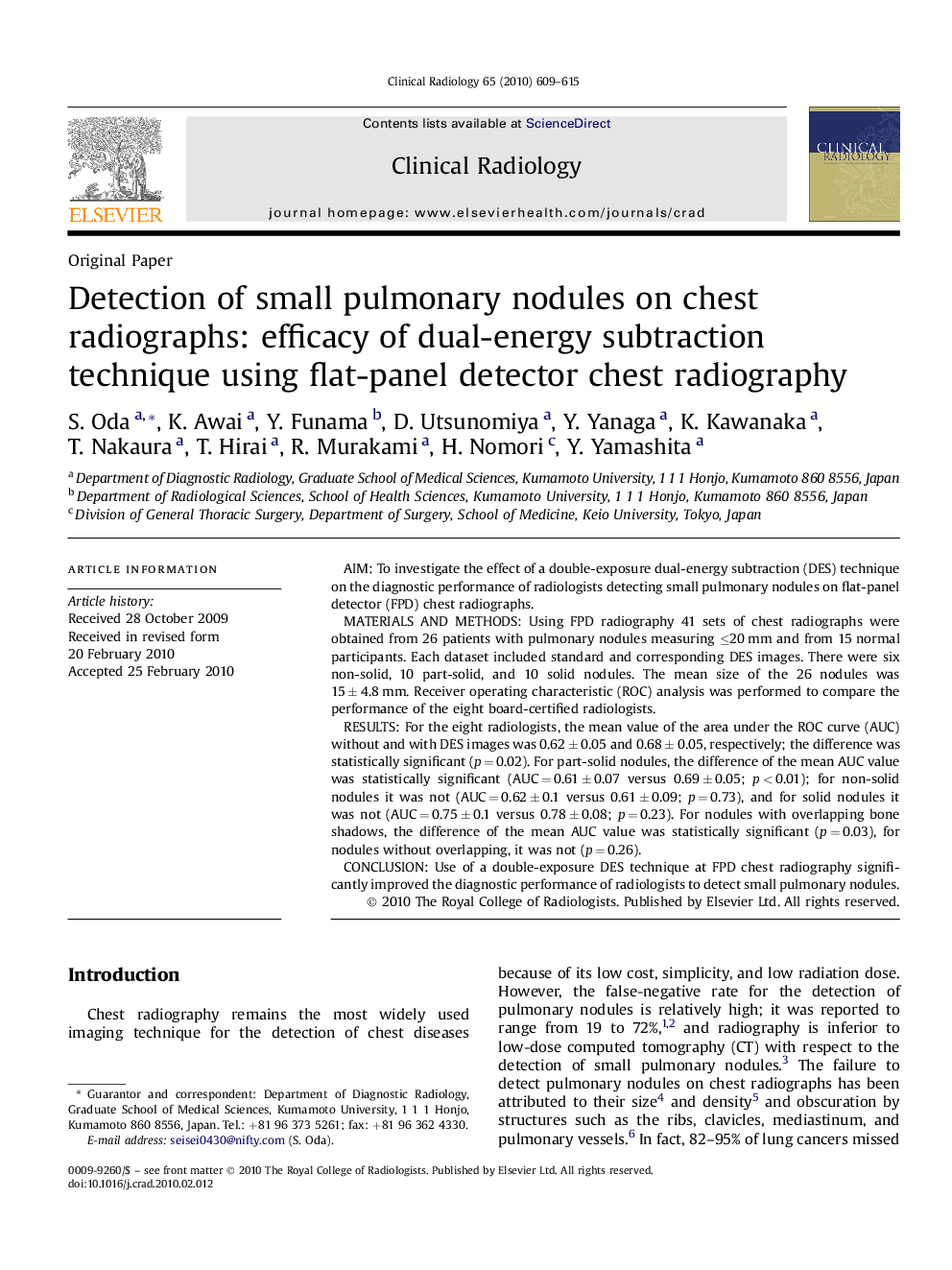| Article ID | Journal | Published Year | Pages | File Type |
|---|---|---|---|---|
| 3983694 | Clinical Radiology | 2010 | 7 Pages |
AimTo investigate the effect of a double-exposure dual-energy subtraction (DES) technique on the diagnostic performance of radiologists detecting small pulmonary nodules on flat-panel detector (FPD) chest radiographs.Materials and methodsUsing FPD radiography 41 sets of chest radiographs were obtained from 26 patients with pulmonary nodules measuring ≤20 mm and from 15 normal participants. Each dataset included standard and corresponding DES images. There were six non-solid, 10 part-solid, and 10 solid nodules. The mean size of the 26 nodules was 15 ± 4.8 mm. Receiver operating characteristic (ROC) analysis was performed to compare the performance of the eight board-certified radiologists.ResultsFor the eight radiologists, the mean value of the area under the ROC curve (AUC) without and with DES images was 0.62 ± 0.05 and 0.68 ± 0.05, respectively; the difference was statistically significant (p = 0.02). For part-solid nodules, the difference of the mean AUC value was statistically significant (AUC = 0.61 ± 0.07 versus 0.69 ± 0.05; p < 0.01); for non-solid nodules it was not (AUC = 0.62 ± 0.1 versus 0.61 ± 0.09; p = 0.73), and for solid nodules it was not (AUC = 0.75 ± 0.1 versus 0.78 ± 0.08; p = 0.23). For nodules with overlapping bone shadows, the difference of the mean AUC value was statistically significant (p = 0.03), for nodules without overlapping, it was not (p = 0.26).ConclusionUse of a double-exposure DES technique at FPD chest radiography significantly improved the diagnostic performance of radiologists to detect small pulmonary nodules.
